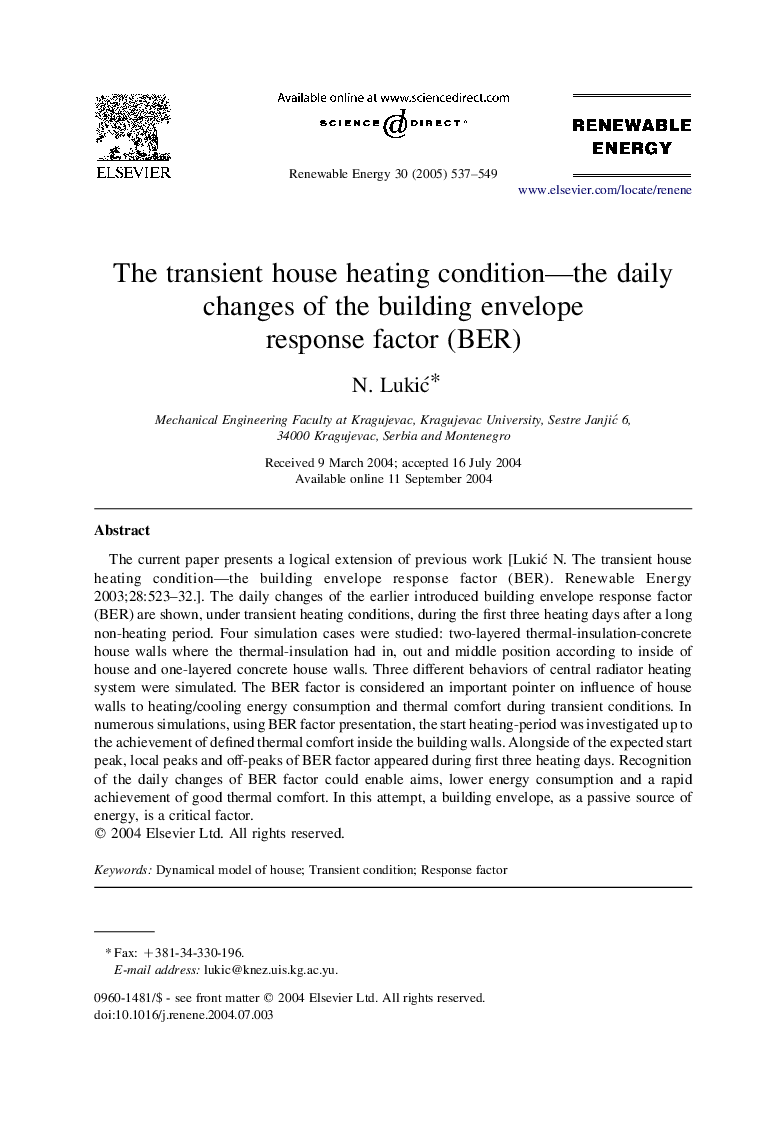| Article ID | Journal | Published Year | Pages | File Type |
|---|---|---|---|---|
| 10294226 | Renewable Energy | 2005 | 13 Pages |
Abstract
The current paper presents a logical extension of previous work [LukiÄ N. The transient house heating condition-the building envelope response factor (BER). Renewable Energy 2003;28:523-32.]. The daily changes of the earlier introduced building envelope response factor (BER) are shown, under transient heating conditions, during the first three heating days after a long non-heating period. Four simulation cases were studied: two-layered thermal-insulation-concrete house walls where the thermal-insulation had in, out and middle position according to inside of house and one-layered concrete house walls. Three different behaviors of central radiator heating system were simulated. The BER factor is considered an important pointer on influence of house walls to heating/cooling energy consumption and thermal comfort during transient conditions. In numerous simulations, using BER factor presentation, the start heating-period was investigated up to the achievement of defined thermal comfort inside the building walls. Alongside of the expected start peak, local peaks and off-peaks of BER factor appeared during first three heating days. Recognition of the daily changes of BER factor could enable aims, lower energy consumption and a rapid achievement of good thermal comfort. In this attempt, a building envelope, as a passive source of energy, is a critical factor.
Keywords
Related Topics
Physical Sciences and Engineering
Energy
Renewable Energy, Sustainability and the Environment
Authors
N. LukiÄ,
